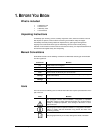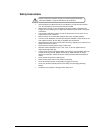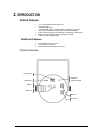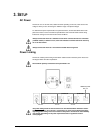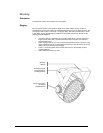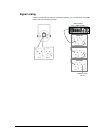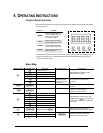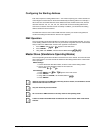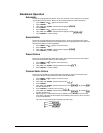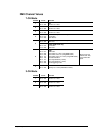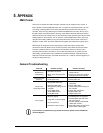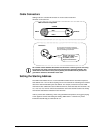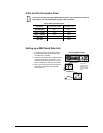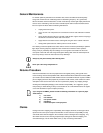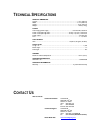
5. Appendix 13 7/20/2010 5:31 PM
5. APPENDIX
DMX Primer
There are 512 channels in a DMX connection. Channels may be assigned in any manner. A
fixture capable of receiving DMX will require one or a number of sequential channels. The user
must assign a starting address on the fixture that indicates the first channel reserved in the
controller. There are many different types of DMX controllable fixtures and they all may vary in
the total number of channels required. Choosing a start address should be planned in advance.
Channels should never overlap. If they do, this will result in erratic operation of the fixtures whose
starting address is set incorrectly. You can however, control multiple fixtures of the same type
using the same starting address as long as the intended result is that of unison movement or
operation. In other words, the fixtures will be slaved together and all respond exactly the same.
DMX fixtures are designed to receive data through a serial Daisy Chain. A Daisy Chain
connection is where the DATA OUT of one fixture connects to the DATA IN of the next fixture.
The order in which the fixtures are connected is not important and has no effect on how a
controller communicates to each fixture. Use an order that provides for the easiest and most
direct cabling. Connect fixtures using shielded two conductor twisted pair cable with three pin
XLR male to female connectors. The shield connection is pin 1, while pin 2 is Data Negative (S-)
and pin 3 is Data positive (S+).
General Troubleshooting
SYMPTOM
POSSIBLE CAUSE(S)
POSSIBLE ACTION(S)
Breaker/Fuse
keeps blowing
Excessive circuit load
Check total load placed on the
electrical circuit.
Short circuit along the power
wires
Check for a short in the electrical
wiring (internal and/or external).
Device does not
power up
No power
Check for power on Mains.
Loose power cord
Check power cord
Fixture is not
responding to DMX
Wrong DMX addressing
Check Control Panel and unit
addressing
Damaged DMX cables
Check DMX cables
Wrong polarity settings on the
controller
Check polarity switch settings on
the controller
Loose DMX cables
Check cable connections
Faulty DMX interface
Replace DMX input
Faulty Main PCB
Replace Main PCB
Loss of signal
Non DMX cables
Use only DMX compatible cables
Bouncing signals
Install terminator as suggested.
Long cable / Low level signal
Install amplifier right after fixture
with strong signal.
Too many fixtures
Install an optically coupled DMX
splitter after unit #32.
Interference from AC wires
Keep DMX cables separated from
power cables or black lights.
If you still have a problem after trying the above solutions, please contact CHAUVET®
Technical Support.



